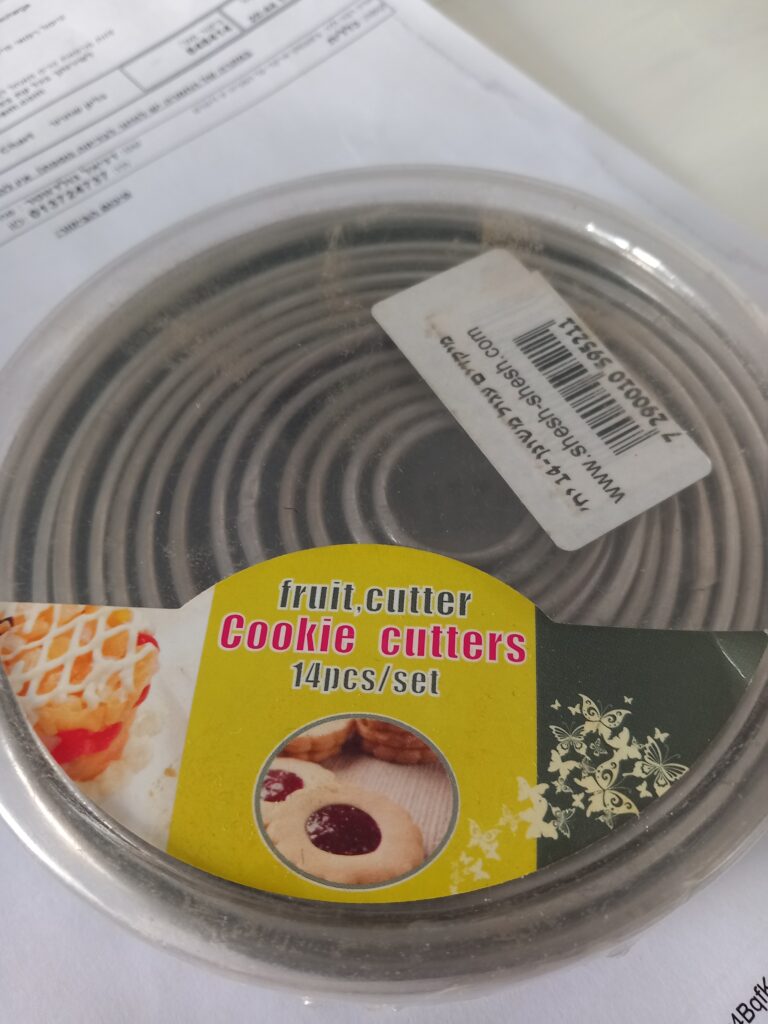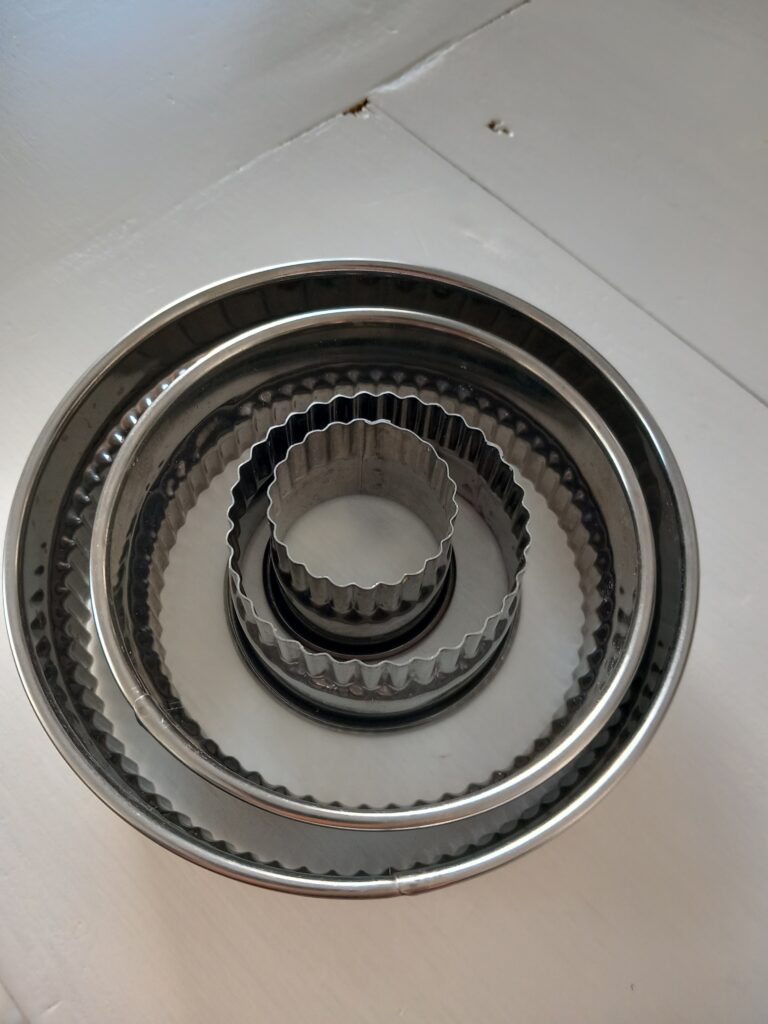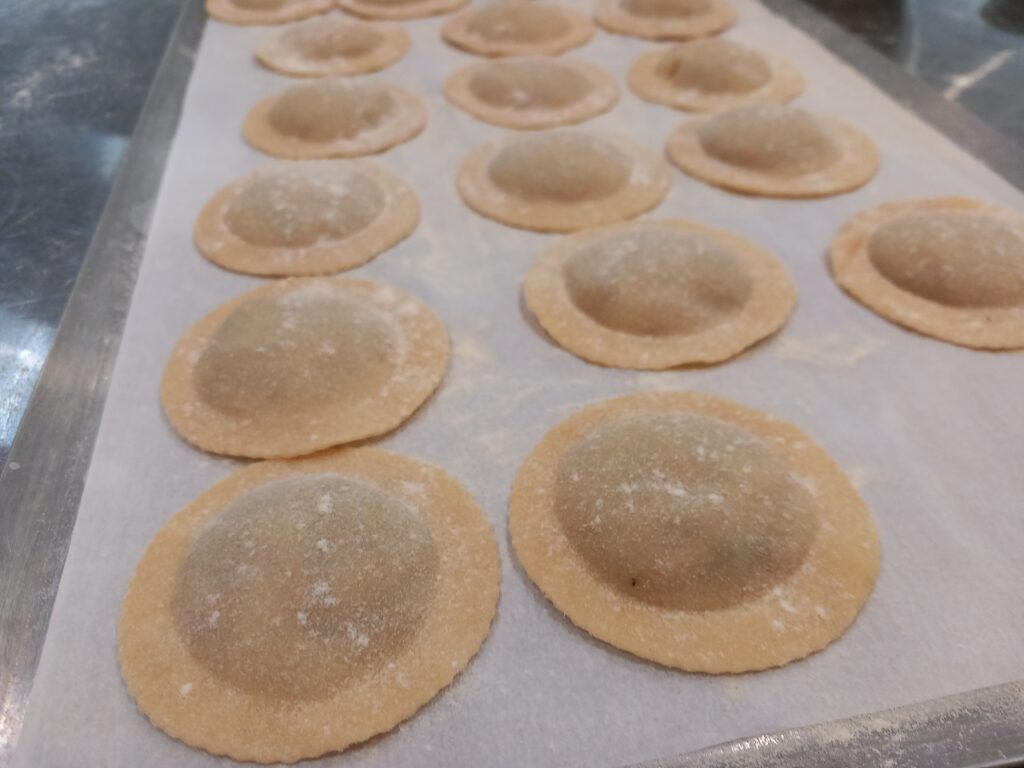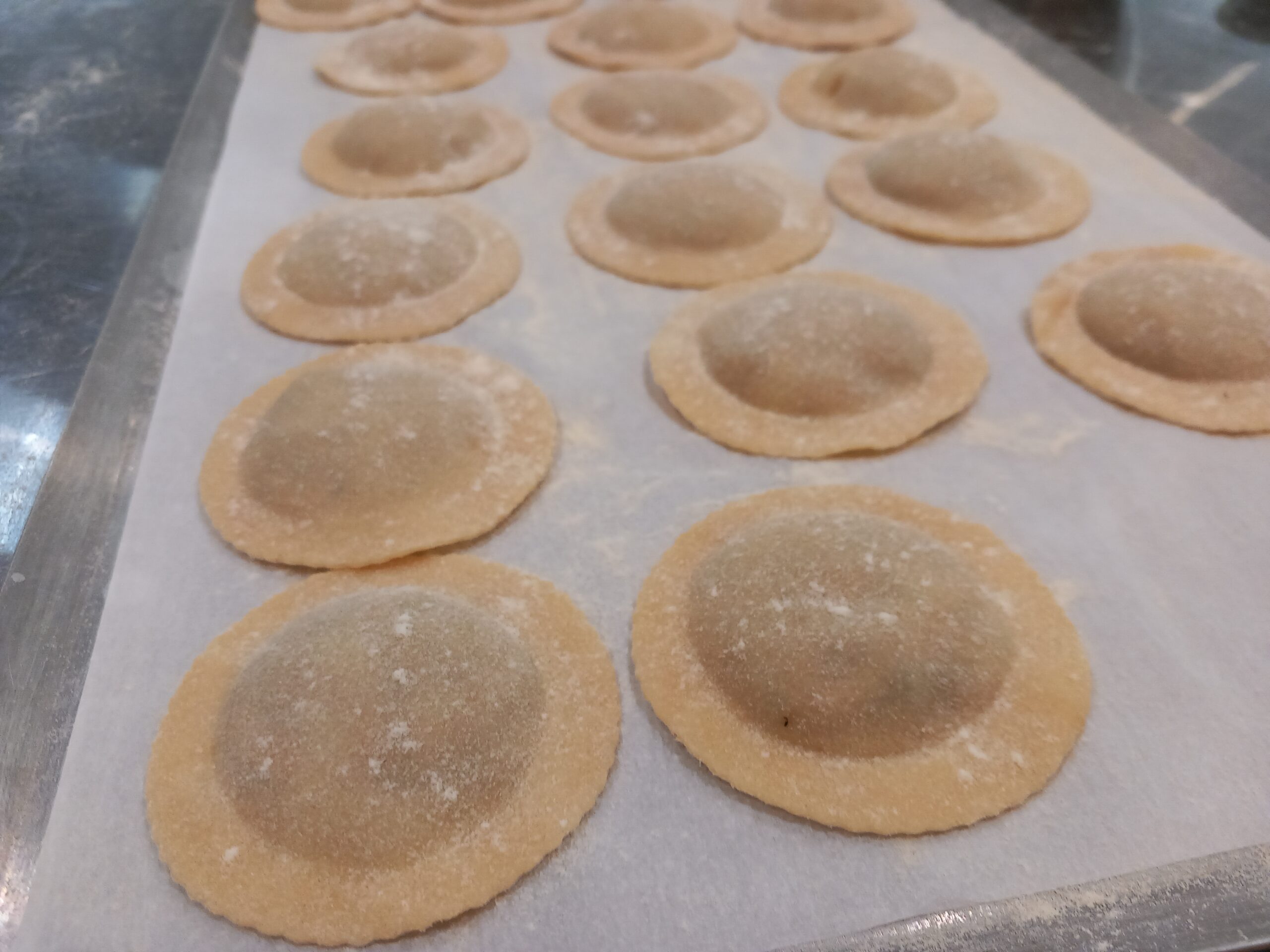For me one of the many levels of ‘heaven’ is attained through rhythmically fashioning pasta fresco on my old Imperia lamination pasta machine. The repetitive winding and folding of the lamination process soothes one’s soul until you arrive at that silky smooth texture of perfecto pasta passing between your finger tips.
Pasta apparently originates in the Middle East: mentioned as itriot in Talmudic writings in the Galilee during the fourth century. It was most likely introduced into Sicily by invading Muslims in the ninth century and worked its way up the boot from there.
As we all know, there are many types of pasta, most with whimsical sounding names – at least to the Anglo ear. Ravioli is a favorite of many and this one is a favorite of mine.
Ravioli di funghi is stuffed with portobello mushrooms infused with strong porcini and lemon flavours. It is best served tossed in olive oil with a drop of lemon juice or with butter and sage.
Ingredients:
- Pasta Fresca: For recipe and method see my previous post.
Ravioli mushroom filling:
- 30 g dried porcini mushrooms
- 1 punnet portobello mushrooms
- 1/2 red onion, diced fine
- 2 garlic cloves, diced fine
- dash of white wine
- 2 sprigs of thyme, leaves removed and diced fine
- handful of chopped parsley
- zest of one lemon
- 2 tbsp tomato paste
- dash of olive oil
- 1 knob butter, margarine or schmaltz
- grated nutmeg
- salt and pepper to taste
- handful of grated parmesan (optional)
- handful of flour for thickening
- 1 large egg
Method:
Fill a large bowl with cold water. Zest one lemon, saving the zest for later, then squeeze the juice of the lemon into the water. Slice the portobello mushrooms very thin and place in the water to soak and absorb the lemon flavour. Strain into colander when needed.
Place the dried porcini mushrooms in a large mug or measuring cup, add 150 ml of boiling water and leave for 20 minutes to soak to extract the strong mushroom flavours. Sieve through paper towel to ensure any dirt from the dried mushrooms is removed. Mix the tomato paste into the porcini water and set aside until needed.
While the mushrooms are soaking, dice the red onion, garlic, thyme and parsley. Keep them separate on the chopping board as you will add at different stages to the pan.
Place a medium-sized sauce pan or a large frypan on medium high heat, add a dash of olive oil and a knob of butter. When hot add onion and stir until transparent. Add garlic, stir for 30 seconds; add strained portobello mushrooms, pinch of salt and pepper, small pinch of grated nutmeg, stir; add lemon zest, parsley and thyme. Cook until the liquids have evaporated.
Add a good dash of white wine and cook until evaporated. Turn heat to low, add a good handful of all-purpose white flour and stir to integrate the flour into the mix. Add the porcini/tomato liquid, stirring and allowing the mixture to thicken. We need a thick filling for the ravioli. Set aside to cool.
Once cooled, mix in one beaten egg, and the parmesan if you choose. I taste the mixture at this point for salt, pepper and nutmeg, and add at this stage before putting in the fridge to firm up.
Pasta for ravioli made in ravioli machines is a little different from pasta manufactured for ‘pasta long’ (tagliatelle, spaghetti…) As this is handmade ravioli and doesn’t require the elasticity needed for machine-made ravioli, you can use the pasta recipe and method from my previous post (linked above).
Equipment and ingredients needed to make handmade ravioli:
- 1 egg for brushing, mixed with a spot of water
- 1 small brush
- 1 set of toothed cookie cutting rings
- small amount of durum flour for dusting
- Pasta machine to roll out sheets of fresh pasta to a thickness of no more than 1 mm.

Assembling the ravioli di funghi:
Cut the block of fresh pasta you have made into two pieces. Keep all pasta not being worked covered, as it dries quickly. Dust your pasta lightly with durum. Roll your pasta through the highest number on the machine, each time taking it down a number until you reach number one. Pass the pasta twice through number one. Dust your work top, lay the pasta on it and cut it in half. Using your largest pastry-cutting ring, stamp out large circles of pasta and place on a tray and cover. Do the second block.
Using the third largest cookie cutter in the set, tooth side down, stamp out as many discs of super-thin pasta that you can. Cover. When making the ravioli, process them individually as they dry quickly.
Take one stamped out disc of pasta, brush it lightly with egg mix. Place the third smallest cookie cutter upside down on the brushed surface, spoon liberally the funghi filling into the ring. Remove the ring, take another disc of pasta and place on top. Using the fifth smallest cookie ring, upside down, gently press downwards sealing the flavour in a mound in the centre. Using your thumb and forefinger, press both sheets of pasta together with enough force to both seal and thin the discs down. Place on the table and using the fourth largest cookie cutter cut the final size of the ravioli. Place on a durum-dusted tray and cover in the fridge or freeze.
Cook in boiling salted water for five minutes before tossing in your sauce of choice.
More than a bit long winded, but making ravioli is more laborious than you imagine.



If you enjoyed this recipe why not share it with your friends via social media or email? If you want a copy of your own select the print option at the top of the page.

